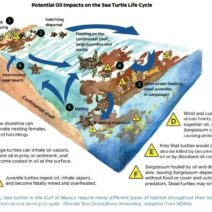When we envisage the causes of climate change, it’s easy to limit our focus to carbon emissions, deforestation, and pollution. However, the repercussions of explosions—both literal and metaphorical—are critical yet often overlooked contributors to environmental degradation. This exploration invites a shift in perspective about how these explosive events can influence our climate, drawing connections between episodic detonations and their broader ecological implications.
Explosions are characterized by rapid expansion and release of energy, which can be categorized into various types, from the expected military detonations to industrial accidents and even natural phenomena. Understanding their effects requires an examination of both the immediate consequences and the lingering aftermath, particularly as it pertains to climate change.
One of the most apparent avenues through which explosions impact our environment is through the release of greenhouse gases. Industrial explosions can result in the sudden release of vast amounts of carbon dioxide, methane, and other potent gases into the atmosphere. For instance, a gas pipeline explosion can introduce significant quantities of methane—a gas 25 times more effective at trapping heat than carbon dioxide over a century—into the troposphere. Such incidents amplify the greenhouse effect, accelerating global warming and changing climate patterns.
Furthermore, the blasts associated with these explosions not only disrupt the immediate vicinity but often result in the combustion of fossil fuels, which further contributes to greenhouse gas emissions. The physical destruction caused by explosions can also incapacitate industrial plants, leading to prolonged periods of non-compliance regarding emissions standards. When facilities are temporarily shut down following an accident or explosion, the ensuing chaos can lead to lapses in regulatory adherence, resulting in environmental harm that extends well beyond the day of the event.
Explosions can also create significant particulate matter that can persist in the atmosphere. These aerosolized particles have ramifications for air quality and, consequently, human health. They can induce respiratory ailments, exacerbating public health crises that, in turn, place additional stress on health systems. Poor air quality can result in a populace that is less resilient to climate change impacts, situating community health as a critical factor in the broader societal response to environmental challenges.
From a geological standpoint, explosions such as volcanic eruptions contribute to climate change through the release of ash and sulfur dioxide. Volcanic eruptions can inject vast quantities of sulfur dioxide into the stratosphere, where it converts to sulfate aerosols that reflect sunlight. This phenomenon can lead to short-term cooling effects on the planet. However, such cooling can also disrupt weather patterns, contributing to oscillations that may result in prolonged droughts or floods in different regions, demonstrating the complex interconnectedness of explosive events and climate trends.
Moreover, the issue extends to anthropogenic explosions, notably those associated with warfare. The destruction caused by bombings not only obliterates natural habitats but also contributes to long-term ecological damage. For instance, detonations in conflict-affected areas can lead to soil degradation, loss of biodiversity, and destabilized ecosystems. These alterations can permanently disrupt the natural carbon cycle, leading to reduced carbon sequestration capabilities of affected land. Research indicates that areas ravaged by war often face significant challenges in recovering their original ecological function, further exacerbating climate change through reduced biodiversity.
While the immediate impacts of explosions are often apparent, there is a subsequent ripple effect that complicates our understanding of their contributions to climate change. The forced migration of populations from areas rendered uninhabitable due to explosions also carries significant environmental ramifications. Displaced communities often put pressure on new ecosystems, potentially leading to overexploitation of local resources and additional habitat loss. Furthermore, as individuals seek refuge from violence, they contribute to urban sprawl, which in turn fuels increased carbon output through greater vehicular emissions and energy consumption.
Thus, the consequences of explosions extend well beyond the explosions themselves. They alter landscapes, disrupt human livelihoods, and generate cascading effects that significantly impact our climate. This complexity necessitates a broadening of our perspectives regarding disasters and environmental policy. It becomes clear that understanding the climate impact of explosions is essential in formulating complete and effective responses to climate change. The connection between explosive events and environmental degradation requires that we consider strategies aimed at disaster prevention, recovery planning, and remediation that account for both immediate and long-term climatic effects.
Ultimately, the need for awareness is paramount. Each explosion, whether from a natural disaster or human error, intertwines with our planet’s climate narrative. Recognizing the interconnectedness of our actions, be it in warfare, industrial practices, or natural phenomena, compels us to rethink how we engage with our environment. Efforts toward climate change mitigation must encompass a holistic understanding of how explosions enhance environmental vulnerabilities, reminding us that safeguarding our planet involves recognizing and addressing every explosive contribution to the climate crisis.
In conclusion, the subtle yet intricate relationship between explosions and climate change urges an expansive view of environmental activism. There lies a potent opportunity for enhancing awareness and catalyzing change within communities that have navigated the aftermath of explosive events. By unpacking these dynamics, we can seek effective solutions that embrace resilience, foster ecological restoration, and cultivate sustainable practices that prioritize our planet’s health.





